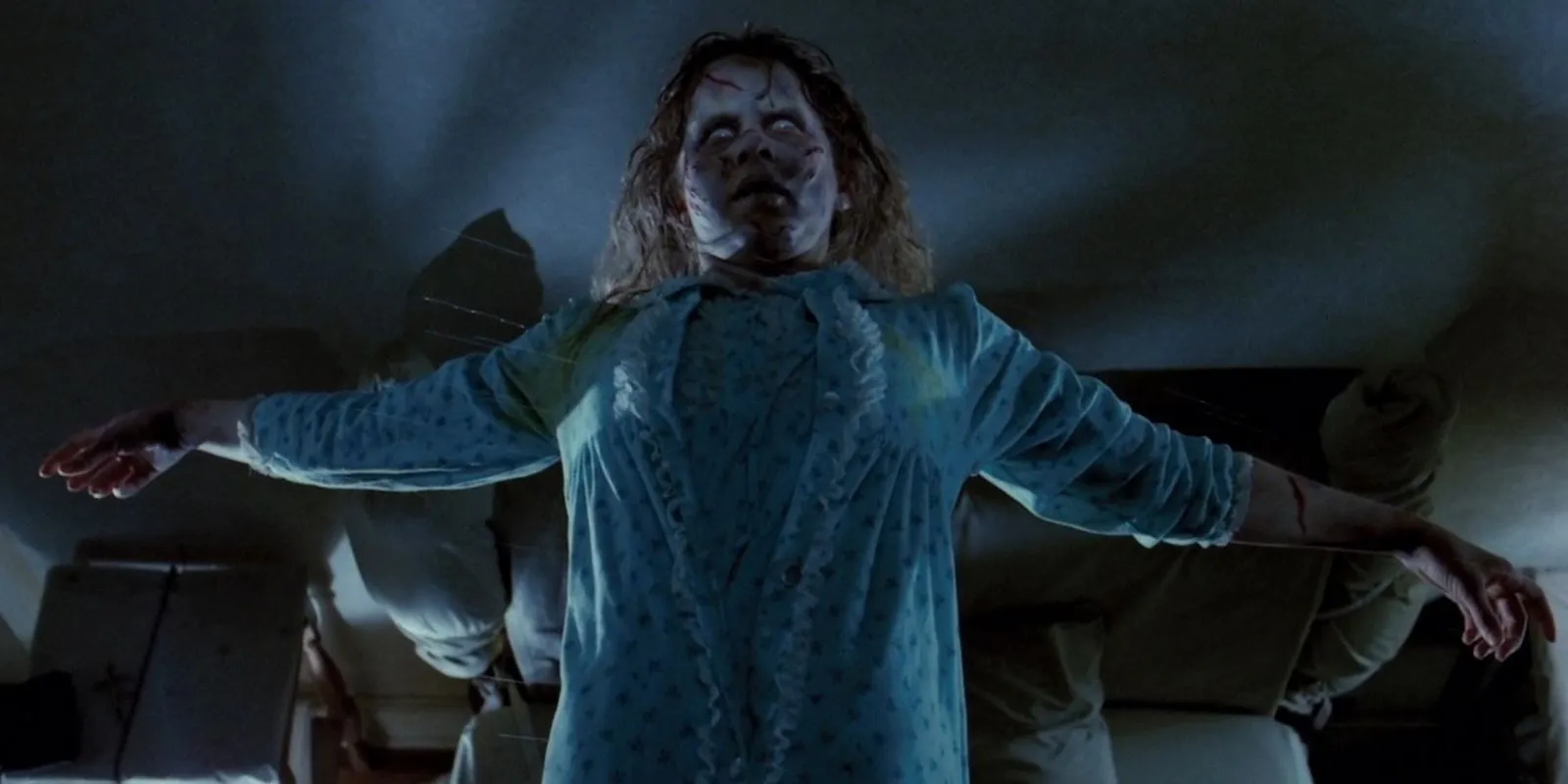
The haunting melody of “Tubular Bells”is forever etched in the minds of horror fans thanks to its prominent role in William Friedkin’s 1973 classic, The Exorcist. Despite its iconic status, there was a moment when the director might not have secured the rights to this unforgettable piece of music. Today, The Exorcist is celebrated as one of the greatest horror films of all time, boasting ten Academy Award nominations and two wins, not to mention its extensive franchise that continues to captivate audiences.
Almost every element of The Exorcist is impactful, and its memorable score contributes significantly to its legacy. The right music amplifies the emotions in successful horror films, and “Tubular Bells”is no exception. William Friedkin’s timely acquisition of this track has proven invaluable in establishing the eerie atmosphere that defines the film.
The Iconic and Essential Role of Tubular Bells in The Exorcist
The Track Plays Only Twice in the Film





“Tubular Bells,”which features on Mike Oldfield’s debut album released on May 25, 1973, coincided with the launch of Virgin Records. The album itself comprises only two tracks: “Tubular Bells, Part One”at 25:30, and “Tubular Bells, Part Two”at 23:22, showcasing Oldfield’s remarkable talent as he plays nearly all the instruments. The piece is both eccentric and dynamic, offering a thrilling auditory experience across its nearly 50-minute runtime. Only the introduction to Part One appears in The Exorcist.
Despite its heavy association with the film, the song is featured in just two brief segments. The first instance occurs at the film’s outset, as Chris MacNeil (Ellen Burstyn) strolls home from her film shoot, where she has yet to experience the supernatural events to come. The eerie piano taps and deep bass lines of “Tubular Bells”craft an unsettling ambiance. Interestingly, throughout the film’s roughly 2-hour runtime, the music appears for just 17 minutes.
The final appearance of the song occurs near the end, right before the credits roll, leaving a lingering sense of discomfort as viewers exit theaters or turn off their screens.
William Friedkin’s Chance Encounter with Tubular Bells
Friedkin Initially Hired a Different Composer

William Friedkin’s journey to “Tubular Bells”was unexpectedly serendipitous. Initially, he commissioned Lalo Schifrin, famed for the Mission: Impossible theme, to compose the film’s score. However, Friedkin found Schifrin’s work unsatisfactory, longing for a sound reminiscent of Brahms’s “Lullaby”that evoked childhood nostalgia.
“I had commissioned Lalo Schifrin to write a score, and I didn’t like the score. I felt the need for something that was akin to Brahams’s ‘Lullaby’—a kind of childhood feel.”
In seeking alternatives, Friedkin visited Warner’s office and discovered a room filled with demo tapes, leading him to the white-label album by Mike Oldfield. The striking melody captivated Friedkin, who recognized that this would provide the haunting backdrop he envisioned for The Exorcist. He successfully secured the rights, paving the way for the song’s enduring legacy.
Friedkin later noted that the album sold between 10 and 20 million copies, a figure validated by the MikeOldfield website, which cites sales at approximately 16 million, largely due to its integration into the film.
The Exorcist: Believer Revitalizes Tubular Bells for a New Generation
Enhanced Usage of a Remix in Believer

In 2023’s The Exorcist: Believer, “Tubular Bells”returns in a modern remix, marking the franchise’s resurgence since the 2005 film, Dominion: Prequel to The Exorcist. The remix, crafted by David Wingo and Amman Abbasi, emerges as Victor (Leslie Odom Jr.) makes his way to meet Chris MacNeil, amplifying tension right from the outset.
The remix is featured three additional times during the film—when Chris confronts the bedroom demon, amidst the climactic exorcism, and during the closing credits. This increased frequency contrasts sharply with the minimal use in the original film, which some believe dilutes its impact in Believer. However, each haunting repetition adds depth and reinforces the emotional resonance of the narrative.
The contemporary rendition is not drastically different from the original but introduces a slower build-up. In The Exorcist, the music bursts forth immediately, propelling the story’s mystery, while in Believer, it slowly creeps in, signifying an impending confrontation with the demonic forces familiar to fans of the series.
Mike Oldfield Continues to Create Music in the Bahamas
Oldfield’s Return: Tubular Bells IV

Following the success of “Tubular Bells,”Mike Oldfield released 24 studio albums, including sequels such as Tubular Bells II (1992) and Tubular Bells III (1998). He received multiple Grammy nominations, winning an award in 1975 for “Tubular Bells”in the Best Instrumental Composition category. Oldfield’s work remains influential, with the original album also being inducted into the Grammy Hall of Fame.
In 2023, he commemorated the 50th anniversary of Tubular Bells with a reissue featuring an unreleased 8-minute track, “Introduction to Tubular Bells 4.”His label hinted at the possibility of this track being his final recording.
“…may well be the last piece ever to be recorded by Oldfield.”
It appeared that Oldfield might retire, opting for a tranquil life in the Bahamas. Yet, recent updates signal a change; in a 2024 interview with LouderSound, he revealed plans for a new project, Tubular Bells IV, stating his excitement over finding solutions to long-standing creative challenges.
“After all these years, I think I’ve finally solved the Tubular Bells sequence problem. That’s my big project.”
While there is no release date set, fans of both The Exorcist and Mike Oldfield are eagerly anticipating news from this legendary composer.




Leave a Reply